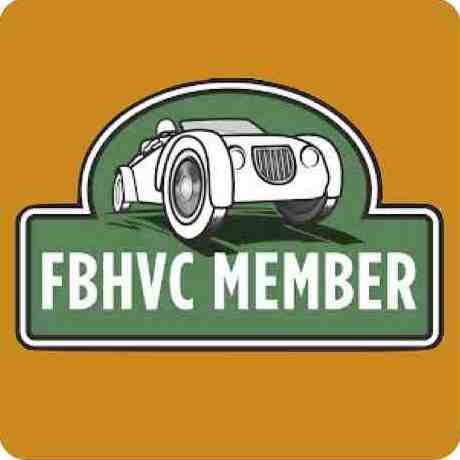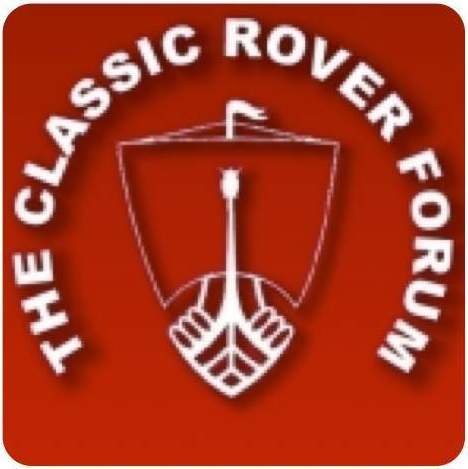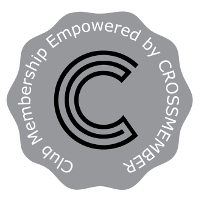Applying for Tax Exemption
Many members and non-members have contacted this Club since the reintroduction of the rolling tax exemption scheme asking how to apply for exemption. There seems to be a lot of misinformation doing the rounds on the internet, social media and web forum. So we thought we'd write a definitive article on road tax or Vehicle Excise Duty (VED) exemption. We explain the legislation, how to determine when your car qualifies, and how and what you need to do to make your application.
Legislation background
Prior to 1997 a rolling Vehicle Excise Duty (VED) exemption applied to qualifying older vehicles which were, as of 1st January of each year, 25 years old. However in 1997 the rolling exemption was frozen in an unpopular move by the then Labour government. Tax exemption was for many years therefore the preserve of coveted ‘pre-73’ cars.
After the Federation of British Historic Vehicle Clubs (FBHVC) published their landmark report entitled The British Historic Vehicle Movement: A £4 Billion hobby in December 2011, the Treasury finally began to recognise the worth in the classic car movement and the industry which had grown up around it. Plans were announced in the 2013 Budget to extend VED exemption by one further year, meaning vehicles built before 1st January 1974 or 39 years old at the time would also benefit from 1st April 2014.
The following year saw the reintroduction of the popular rolling exemption, albeit this time at 40 years.
Some key points to know:
- Tax exemption is based on a car's build date, not the date on which it was first registered.
- Cars qualify for tax exemption in yearly batches, not when they pass the 40th anniversary of their build date.
- Cars qualify for tax exemption if they were built 40 or more years before 1st January.
- However, you cannot apply for exemption until the 1st April in the qualifying year. Therefore, a car must be a minimum of 40 years and 3 months old before you can apply for exemption.
- With the rolling exemption now back in place, all P6s will have qualified for tax exemption on 1 January 2018, and be eligible to apply for exemption on 1 April 2018.
The table below summarises the situation
|
Built before |
First qualifying year (40yrs) |
Becomes VED exempt |
|
1/1/74 |
2014 |
1/4/2014 |
|
1/1/75 |
2015 |
1/4/2015 |
|
1/1/76 |
2016 |
1/4/2016 |
|
1/1/77 |
2017 |
1/4/2017 |
|
1/1/78* |
2018 |
1/4/2018 |
*P6 production ceased 19th March 1977
In the table I have carefully avoided referencing registration suffixes because the legislation is based on date of manufacture not on the date of first registration. To further complicate matters, the V5C (logbook) does not detail the car's date of manufacture, only the date of first registration.
It is important to be clear on this point as we know some late cars were registered on ‘S’,’T’ and even ‘V’ suffixes even though they were made before production ended in 1977. Also cars which were initially exported may have been re-imported and registered some considerable time later on a non-age-related plate.
Is your car tax exempt?
Let’s deal with the easy cases first. If your V5C (logbook) shows that your car was registered at least 40 years ago in a given first qualifying year then your car will become VED exempt on the 1st April of that year. On or after the 1st April you can apply to have the taxation class of your vehicle changed to ‘Historic’ and apply for NIL tax. Details of how to do this are given below.
Early calendar year registrations
Problems start when a car was registered early in a new calendar year as there is uncertainty in which year the car was actually made.
By way of an example, let’s consider a car registered in January 1975.
Was the car made in January 1975, shipped to the dealer and registered all during the month of January? Or was it built in 1974, ordered and shipped to the dealer in the new year and registered in January 1975?
Well the difference could cost you a year’s tax! If the former is true then our car wouldn’t qualify until 2016 because it misses the 1/1/75 build cut-off date; if the latter was true it would qualify in 2015.
There are a whole host of reasons why registration could have been delayed. For example a car could have been diverted through rectification to have various faults fixed. Certain models may have been slow sellers, for example V8 models during times of very high fuel costs. Cars could also have been finished but not shipped out because of industrial action.
Build date concessions
DVLA acknowledged this situation and have implemented the following policy.
If the car was first registered within the first week of a new year (1st – 7th January inclusive) then a car qualifies automatically by concession as the car was very likely made in the previous year. In effect the build date cut-off is extended by one week so our table above becomes
|
Registered before |
1st Qualifying year (40yrs) |
Becomes VED exempt |
|
8/1/74 |
2014 |
1/4/2014 |
|
8/1/75 |
2015 |
1/4/2015 |
|
8/1/76 |
2016 |
1/4/2016 |
|
8/1/77 |
2017 |
1/4/2017 |
|
8/1/78* |
2018 |
1/4/2018 |
*P6 production ceased 19th March 1977
But what if your car was registered after 8th January? Well there is still a chance that your car was built in the previous year, and DVLA accommodate this situation also. DVLA will accept a dating certificate from BMIHT Gaydon, which shows the actual date of manufacture from the archived Rover production records as evidence that the car was made in the previous year. You as the vehicle owner would have to gather this evidence yourself and send it to them as proof. Details of how to apply for a dating certificate are given at the bottom of this article.
Historic VED: Making your application
Initially you need to change the tax classification of your vehicle from Private/Light Goods (PLG) to Historic. You can do this in person at a Post Office that deals with Vehicle Tax. You’ll need to fill in your current V5c as detailed below and take a valid MOT certificate with you.
In section 7 of your current V5C, Changes to current vehicle, fill in the section marked Taxation Class. Write 'HISTORIC' in the boxes provided in black pen using block capital letters. Then sign in section 8.
According to the DVLA, on application your V5c must show a date of first registration 40 years prior to the 1st January in the qualifying year. So for example applying in April 2015, your V5c must show a registration date prior to 1/1/75. However the concession mentioned above will mean that cars registered up to and including 7th January will qualify.
Remember you can only make the application on or after the date your car becomes VED exempt, so 1st April or after in the qualifying year.
If you have tax on the vehicle at the time of application you will automatically receive a refund for each full month remaining. Payment will be by cheque from DVLA Swansea.
If for any reason the Post Office are not able to transact then a postal application will need to be made direct to the DVLA Swansea SA99 1DZ. You’ll also need to obtain and fill out form V10 ‘Application for Tax’ and send in addition to the completed V5c and MOT certificate.
Fill out the V10 putting your personal details in section 1 then fill in detail about your car and new taxation details in section 2. Write 'HISTORIC' in the 'Taxation Class You are Applying For’ section.
If the V5c is missing or you believe the age to be wrong, you will need to obtain and send a dating certificate from BMIHT Gaydon as proof of the vehicles age, see below for details. To obtain a V5c you’ll need to apply separately using form V62.
And that’s it !
If you applied at the Post Office taxation should be instant.
If you apply direct to Swansea you’ll need to wait for confirmation before the car is taxed. Unless the car is already taxed you’ll need to wait for confirmation before driving the car on the road.
Either way you’ll receive an updated V5c showing the new HISTORIC taxation class within 4 weeks.
Renewing tax in subsequent years
Although your vehicle has become VED exempt you must still apply for nil-value vehicle tax. This is the same process as for any other car except you won't have to pay anything. DVLA will send you a V11 reminder as normal approximately 2 weeks before the tax is due to expire. You can then apply online or at the post office as normal or declare SORN if the vehicle is off the road. The only difference is you won't have to pay anything.
DVLA Forms
- V5c Vehicle Registration Certificate or Logbook.
- V62Application for a Vehicle Registration Certificate.
- V10 Application for Vehicle Tax.
You can find all the forms you’ll need online by clicking here.
Applying for a Vehicle Dating Certificate
If you need to prove the date of manufacture of your car you need to send DVLA what they term a ‘dating certificate’. They will only accept an official document for the BMIHT Gaydon and not independent research carried out by car clubs such as the work The Rover P6 Club has undertaken. Our research at Gaydon was designed to help you identify whether your was built in the previous year from its chassis number, but you would still need to apply for a dating certificate if its registration date was after 8th January.
Gaydon’s name for 'dating certificate' document is a ‘Heritage Certificate’. Regardless of what it is actually called it is a verified copy of the archived factory record for your car and it includes the all-important date of manufacture. You can apply for a certificate for your car online here.
Unfortunately it will cost you £41 for the privilege but the silver lining is that if accepted it is considerably cheaper than a year's tax.
Words by: Pat McWiggin
Copyright The Rover P6 Club, March 2015




